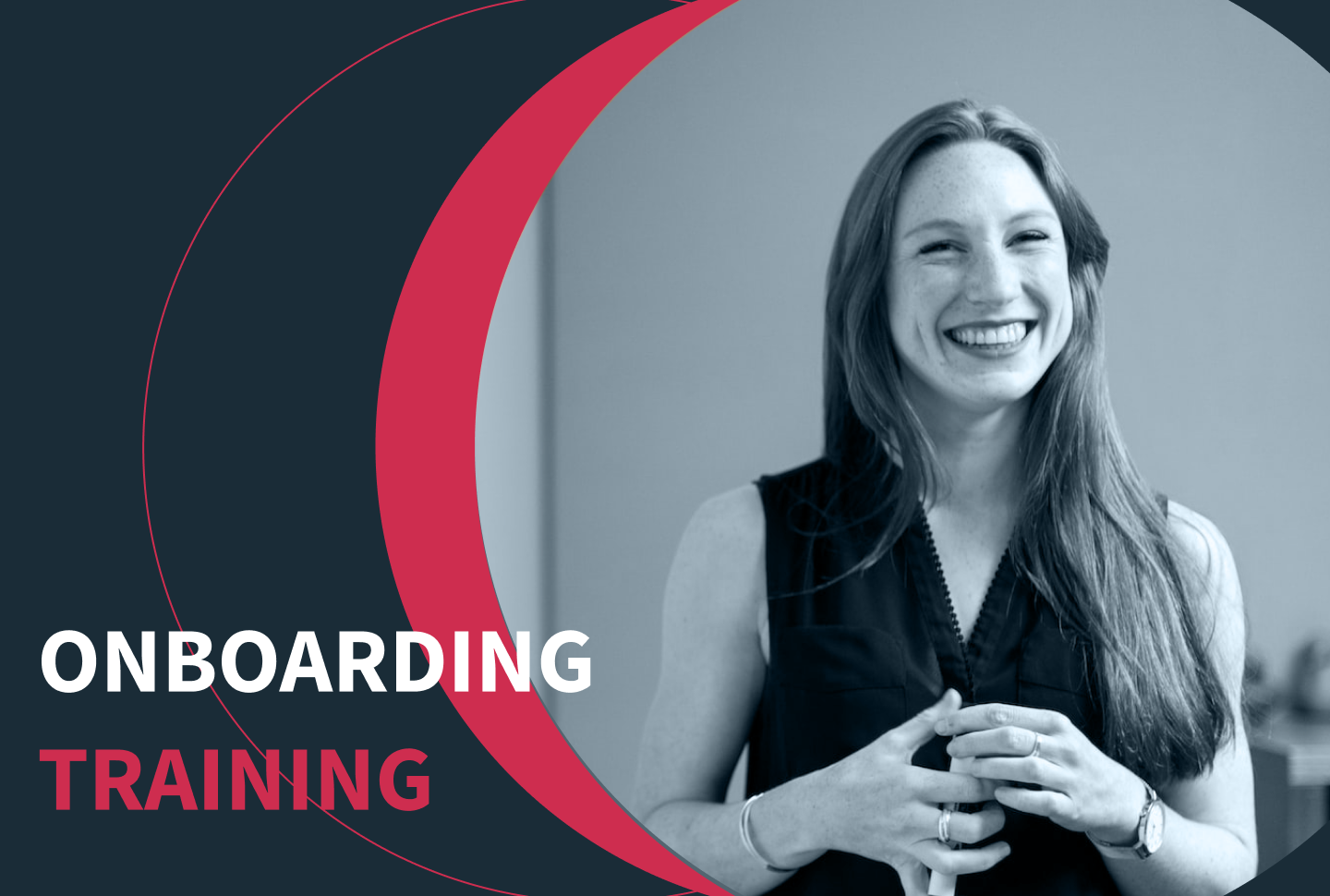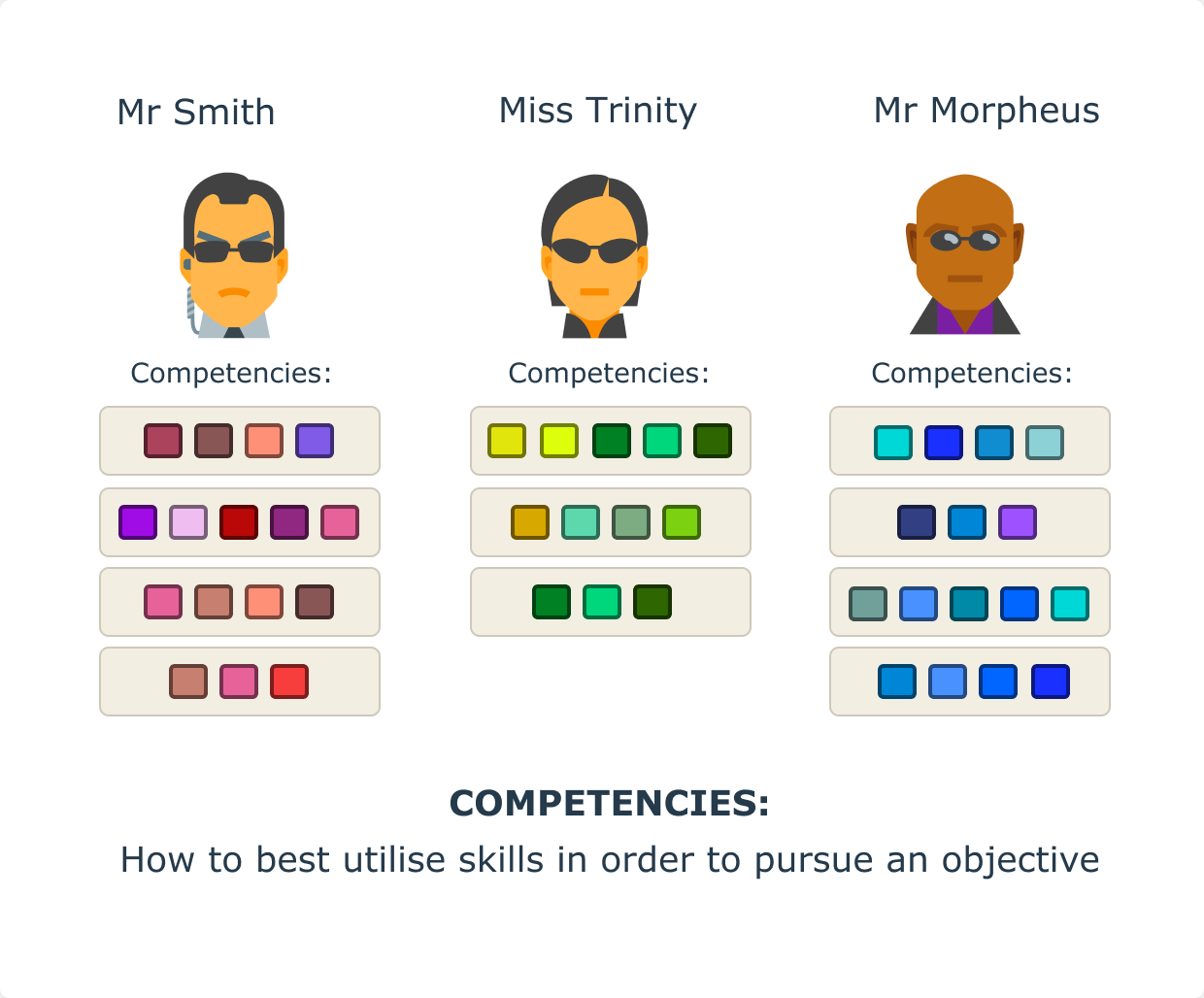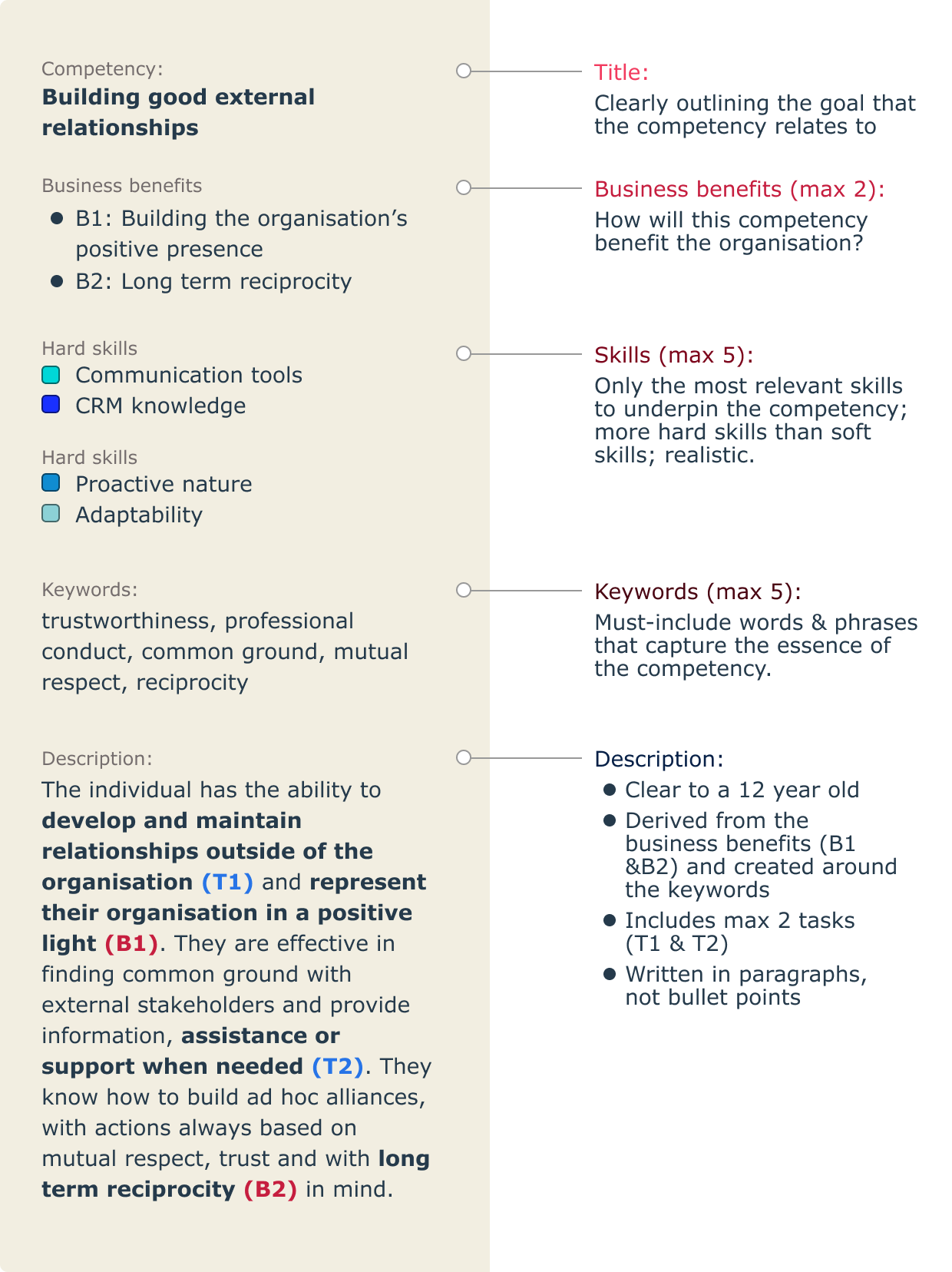


Introduction
The foundation of any organisation’s performance is its people and their talents. Understanding the scope and nature of their talent is therefore imperative.
But understanding the operational performance levels of an organisation, viewed through the talent lens, may sound like a gargantuan task.
It requires a structured framework that reflects the organisational talent requirements.
It also requires a toolset that allows all major stakeholders to measure and assess talents during their workflow in real time.
In this article, we will outline:
- How to keep the structure of a competency framework simple yet comprehensive
- How to make sure your approach remains compelling to each stakeholder, is adopted by everyone in the organisation and is easy to understand.
What is a competency framework?

A competency framework is a model that describes the landscape of job roles in the organisation, and the list of competencies and skills required to perform these job roles successfully.
In addition, it provides the foundation for a record system that helps view, assess, map and understand these competencies, skills and other key attributes of the workforce throughout the organisation.
What is a competency framework used for?
A well-structured competency framework helps employees understand the expectations of their job roles and focus on things that drive success in the organisation.
Benefits for the employees
For employees, it provides the description of excellency in their job role, outlined expectations and the guidance for personal growth within the organisation.
The framework helps them understand the broader picture of the organisation, and their roles and responsibilities in impacting the bottom line. It can also provide useful information for retaining talent, as well as increasing their internal mobility.
Last but not least, it increases transparency when employees are being assessed by line managers. The clear benchmark makes their assessment more objective and less prone to bias from the manager.
Benefits for the managers
For line managers, the competency framework serves as a benchmarking tool that helps them provide more standardised employee assessments.
Many managers aren’t proficient in people development. Therefore, it falls on the organisation to take responsibility and better support their managers in assessing their team’s needs (one YouGov survey found that 80% of employees have experienced poor management or a poor manager at some point in their careers).
A competency framework can be used as a tool that helps them execute skills assessments / performance reviews of their team members.
Benefits for the organisation
Better data from skills assessments / performance reviews finally brings benefits to the top-level management.
Well-structured and standardised employee assessment data gives organisations a clear understanding of existing talents. It also provides a foundation for decisions on developing internal talent or acquiring new people with the needed talents.
Of late, a lot of emphasis is put on building internal mobility marketplaces. These effectively prevent people from leaving the company because they grew tired with core assignments linked to their role.
Structuring a competency framework
Additional elements (such as the ability to use certain tools, knowledge of company products or required certificates) can be used to better describe job roles requirements or the proficiency of individual employees.
Let’s explain each element of the competency framework in more detail.
Skills
Skills are the fundamental elements of the competency framework. They describe specific learned abilities that are needed to complete a task.

Most skills are generic and can be used across different organisations. This makes sense – people possess skills and they carry them with them when they change their jobs. Skills are what remains with them even when they change their employers.
Traditionally skills are divided into two categories: hard skills and soft skills.
Hard skills
Hard skills relate specifically to technical knowledge. Therefore, they can be taught through education, improved by training or developed through practice.
Every job requires some form of hard skill that relates specifically to that role and industry. In today’s technology-driven world, hard skills do not have to relate to things like heavy machinery, but can apply to software like creative suites.
Examples of hard skills:
- Data analysis
- Documentation
- Objection handling
Soft skills
Soft skills relate to personal characteristics that shape how you act on the job. These have roots outside of the workplace and have probably been in development for longer than any technical skills that an employee may possess.
Whilst technical skills apply to specific job roles and industries, soft skills are fluid and can be applied to a wider breadth of roles and functions.
Examples of soft skills:
- Critical thinking
- Curiosity
- Time management
Mastery of essential tools
Job roles often require an advanced understanding of specific products and essential tools, such as designing in a specific photo editing suite.
People will acquire and improve on the knowledge of specific product suites for years, oftentimes investing into structured learning, and acquiring certificates as proof of skill.
Mastering a certain tool can’t be directly compared to a skill.
If an employee is well versed in a rival design suite, but not the one the organisation uses, then their talent is not directly transferable as they require retraining and onboarding to the organisation’s toolkit.
That’s why we recommend a competency framework to contain tools as a separate category next to hard and soft skills.
Competencies
Each skill, or even a skillset needs to be put to use. The skill answers a question of What. What does someone know? What are they able to do?
We can think of a competency as the definition of done. They need to answer the question of How to best utilise skills in order to pursue an objective.

Why skills alone aren’t enough
Do we really need tools and products AND this competency lingo?
The answer is simple: if you want to understand the alignment of your business objectives with your organisational skills’ footprint, the way to measure it is by evaluating competencies.
Skills are the What and the ability to Do. Competencies are the How.
Structuring a competency: practical guidelines
In order for competencies to be relatable and easy to follow, we suggest that a common structure is applied to all.
First and foremost, a competency needs to be titled, clearly outlining the organisational goal that the competency relates to.
Then the business benefits must be outlined. There should be no more than two business benefits within a competency as to not cause confusion, and they must support the objective of the title.
The next step is to describe the competency. In order for the description to work, we suggest the following:
- Make the wording so it would be clear to a 12-year-old
- Include no more than 2 criteria for evaluation. Try aligning them with business benefits whenever possible.
- Write the description in the form of a paragraph, do not bullet point it
Finally, select only the most relevant skills to underpin the competency. There should be no more than 5 hard and soft skills combined, and preferably, hard will prevail over the soft ones (i.e. 3 hard skills and 2 soft skills).
Competency example
The best way to explain a competency is to look at a real-life example of one.
If we take a Customer Success Representative, one of the essential competencies required to successfully perform this role is “Building good external relationships”:

As we can see, the described competency requires the efficient application of all the listed skills (and more), experience and knowledge.
Competency summary
Unlike skills, competencies are specific to every organisation, as they will embrace its core values and business strategy.
While it’s relatively easy to define the list of required skills and assess them, defining competencies is not that straightforward and there are some common pitfalls you should avoid.
What is a useful competency from an organisational standpoint?
Every organisation has a business strategy, KPIs and a clearly defined set of values. To survive, it possesses a deep understanding of the drivers of its success.
But defining operational objectives is hard to achieve. Especially when you are linking them to people’s skills and their ability to impact the bottom line.
Many organisations struggle in reaching a consensus on what key competencies are.
For the most part, the failure lies in overly complex assessment criteria and muddled structures, which results in a rigid system that fails to explain:
- Why competencies and skills matter to the line manager?
- Why they matter to the individual?
- Why this will matter to the bottom line?
People are selfish, in the best way possible. They need to know what’s in it for them.
“How will a competency evaluation make my contribution more valuable? Better salary, more suitable challenges in my day-to-day, ability to reach a more senior position? Maybe making me more attractive on the job market if the time comes to make a move?”
Without communicating the value of a competency, any solution or framework built to capture it will fail.
Survey data shows that during check-ins with their managers, employees view receiving performance feedback as the most valuable outcome. Career development comes second.
In order to construct a good competency, consider the following points:
- The objective/desired behaviour is clear from the title
- It is simple to understand
- Any employee can identify with it
- The list of required skills, tools and other experience that underpin a competency is realistic and credible
Competencies and levels of mastery
Established competency models are linked to educational models and serve as the backbone of career pathways planning. The logic is linear, you’ll be climbing from an assistant to a project manager to head of PMO, up to COO some sunny day.
Much in the same way as you will climb through competency levels. Your professional development is carefully aligned to this career pathway.
For this linear approach to support an individual’s professional development throughout their career, it requires a number of mastery levels.

On the surface, this is a good thing. With each new level, the individual can accomplish the next business goal(s), making them more valuable to the organisation. Achieving higher levels of mastery will also give individuals a sense of empowerment and meaning.
Progress is a good thing. This structure might be reasonable from a lifelong personal development view of an individual too.
With working from home, the shift to online, more emphasis on professional services and drastic changes in the supply chain, management has forced all organisations to rethink how they’ll approach doing business. Agile team formations, rapid product deployments and pivots in product strategies need to happen much, much faster than before.
Looking at an organisational context, there are 2 major issues in having 6 levels of mastery in a competency:
- It’s very difficult to maintain these competencies, as with every strategic organisational change you need to review all the requirements for reaching each level (usually 2 per level), along with the rest of the competency. This happens more often than you might think – and creates a lot of overhead.
- Creating complex competencies with increasingly demanding criteria of assessment makes it nearly impossible that a line manager may have the required expertise to assess their colleague’s mastery level. If the assessment doesn’t lie (primarily) on the line manager, the assessment framework becomes much too complex and – again – requires overhead from the perspective of organisational design.
Additionally, the 5th and 6th levels of mastery are in most cases heavily skewed towards leadership abilities and strategy related objectives.
For this reason, we suggest developing and introducing a set of leadership and strategy-related competencies that can be shared across the entire organisation.

The mastery level of a leadership competency, combined with the levels of other competencies, provides a clearer and more objective picture about an individual than a single competency assessed on a scale with a number of mastery levels.
Even if the nature of leadership or the organisation’s strategy changes, you’ll still only need to re-align on competencies focused around these areas, rather than a complete revision of your competency model.
That’s why 6 levels of mastery in the competency frameworks will soon cease to be.
By introducing unified assessment criteria and reducing an unnecessarily large amount of business objectives (=requirements), the process of assessment can be significantly simplified.
What else to avoid when designing competencies
What a competency should be composed of and what they often turn out to be are very different. We’ve reviewed many competency frameworks, and what we have found is that most are very elaborate, but in turn extremely difficult to put to use.
Typically, competencies are overly complex, full of jargon and criteria that is difficult for people to understand.
Understanding the organisation’s own products
Every company must have a near-fanatical focus on understanding their own offering. Few companies have one or two products on offer, more often they will offer tens or even hundreds of them.
One of two things in relation to products tends to grow as a company grows: size of inventory or sophistication.
Therefore, understanding how well your people master your products is just as essential as understanding their skillset. Organisations need a robust and simple set of ratings which determine the mastery of a product.
In JollyDeck’s competency framework we’ve decided to implement a 3-level assessment scheme for products.
Products is a generic term for an organisation’s offering. It can mean implementing a fairly complex product to a client, one which may take several months to complete, or selling a legal compliance training package.
A typical example in JollyDeck would be implementing the JollyDeck platform (1st product) and launching our GDPR awareness programme (2nd product) to all of the organisation’s people.
What do grades mean?
- You’ll get the 1st nod if you’re just getting started and can’t handle their side of the product autonomously.
- Level 2 will mean you are knowledgeable on the product
- Level 3 means you both know the product and help others understand it too – so guidance and support can be provided to other people on the project.
Tip: the best schemes that assess the mastery of products are agnostic of the role a person occupies.
Assessing performance in a competency framework
At this point, we have the competencies specified, and the employees are aware of their expectations. Now it is time to benchmark employees on how well they are meeting those expectations.
Typically, this is achieved through regular and structured check-ins between an employee and their manager. Often called one-to-ones or performance reviews, these check-ins provide organisations with the chance to offer constructive feedback to the employee and elaborate on key goals that the employee must address. Whilst this is an important part of any check-ins, the key focus of these meetings must be the performance review section.
Done right, performance reviews will revolve around planned activities and the competency framework.
The competency framework’s quality is proven through how well it is adopted by line managers and employees. If the competencies are described in a clear and well-structured manner:
- Employees won’t have any issues in understanding the criteria of each competency
- Managers won’t have any problems in assessing the right grade of mastery to the employee
Another mark of a competency framework’s quality is how the individual competency’s expectations are levelled across the organisation. If the individual competency provides little room for estimates, bias and guesswork, then this type of system will be a valuable resource for managers.
Conclusion
Competency frameworks are a strong foundation for the development of your employees and understanding the underlying factors that determine the success of your organisation. Functional competency frameworks enable you to manage and develop talent more efficiently and create a basis for an internal mobility marketplace. This will help you keep your people longer, happier about their careers.
There are many different views on how to organise a competency framework within a company. As suggested throughout the article, we want to focus on the practical point of view. A good framework will be one that is:
- Easy to understand to all stakeholders
- Simple to maintain and adapt to the ever-changing business needs
- Actually helpful to all employees trying to understand their job, and what they need to do in order to master the different levels within their job

